| HOME |
|---|
BOOTES
The Herdsman
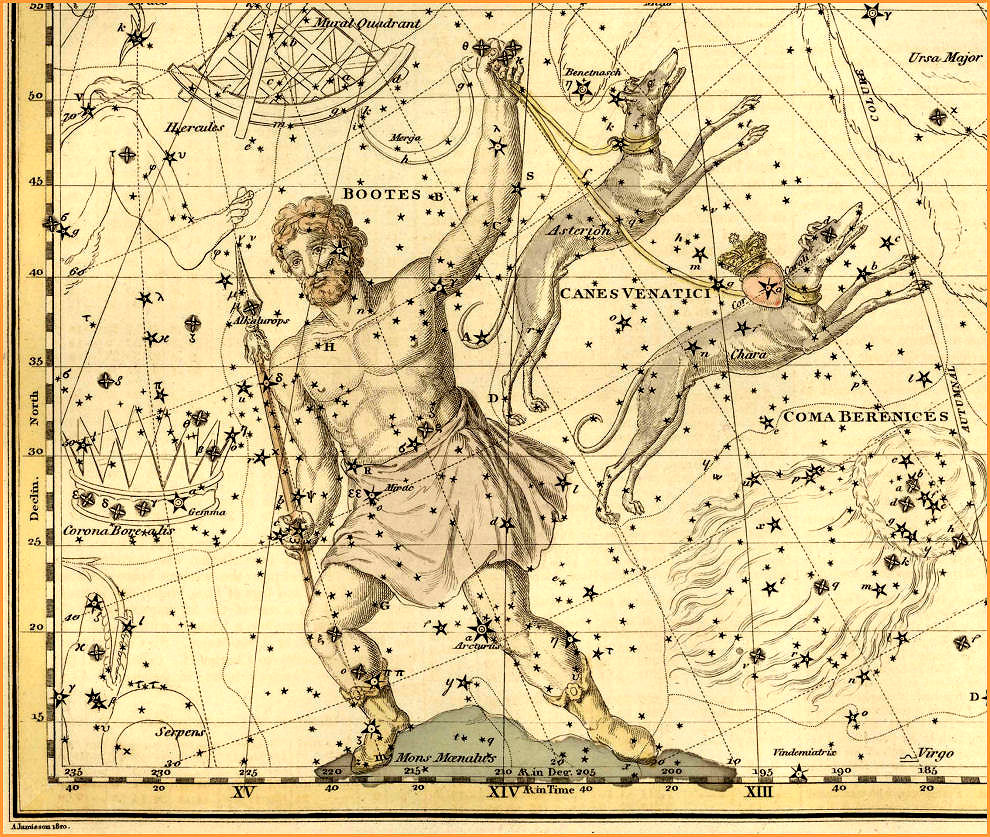
Bootes - Celestial Atlas by Alexander Jamieson - 1822
| HOME |
|---|

High in the sky during late spring and early summer Bootes, the herdsman, drives his animals before him, towards greener pastures in the north. But this is no ordinary herdsman, and he does not tend the usual flock of domestic charges. This herdsman is in charge of a strange celestial crew, consisting of two bears, (Ursa Major and Ursa Minor,) two lions, (Leo and Leo Minor), a lynx (Lynx), a giraffe ( Camelopardalis), and a dragon (Draco.) With the help of his two dogs, (Canes Venatici), he keeps them all moving through the night in an unending circle around the North Star, Polaris.
Bootes is one of the oldest constellations in the sky. It is mentioned in Homer's 3000 year old Odyssey, and was recognized as a herdsman long before that, a celestial testament to one of man's earliest occupations.
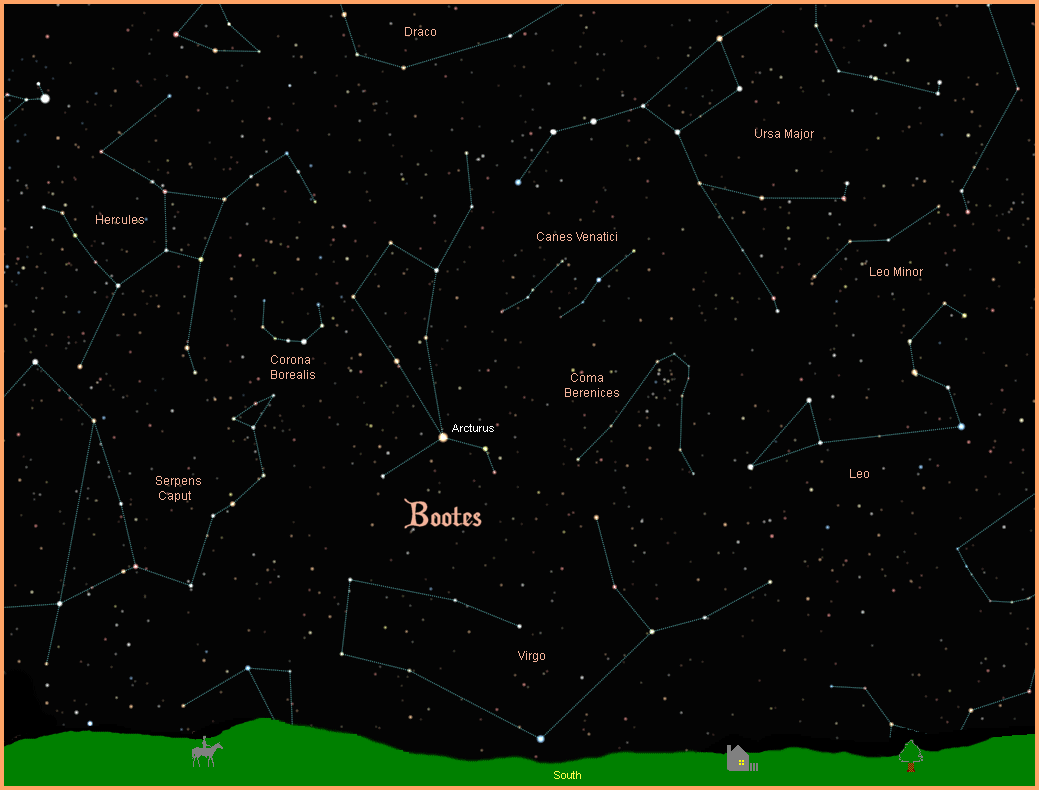
The constellation is easily identified by the blazing golden orange star Arcturus, the fourth brightest star in the sky. Its magnitude of -0.06 is a result of the star's proximity of only 37 light years, and its massive size. With a diameter of 20 million miles, it is 20 times larger than our Sun. Classified as a K0III orange giant, "Arcturus" means guardian of the bear.
Beta Bootis is the star Nekkar, from the Arabic word for cattle driver. It is a G8III yellow giant, with a magnitude of 3.48, about 225 light years away.
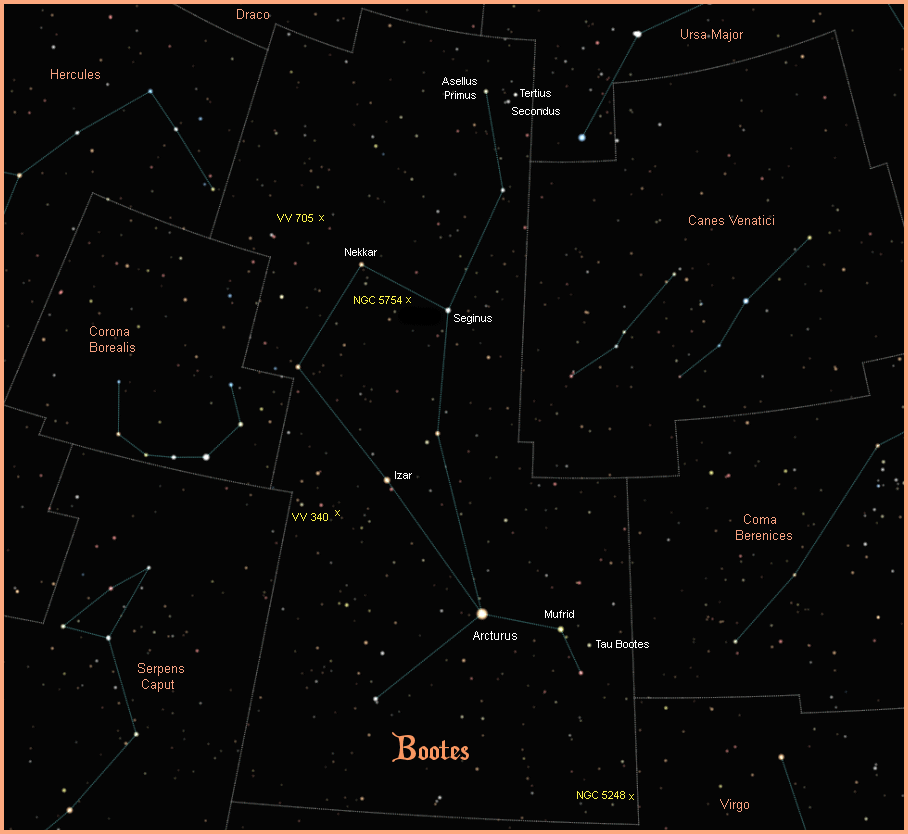
Gamma Bootis is named Seginus, after the Greek word for herdsman. It is an A7IV white subgiant, with a magnitude of 3.0, about 85 light years away.
Epsilon Bootis has the name of Izar, the girdle. It is a binary system, 203 light years away. The primary star is a G9III yellow/orange giant, with a magnitude of 2.37.
Eta Bootis is called Mufrid, from the Arabic for the solitary one. It is a G0IV yellow subgiant with a magnitude of 2.68, only 37 light years away.
Up in the northwest corner of the constellation, in the palm of the herdsman's upraised hand, are three stars representing donkeys, although the origins of the association are unclear. The brightest of the three is Theta Bootis, at magnitude 4.04, with the name Asellus Primus, Latin for first donkey. It is an F7V yellow main sequence star, only 47 light years away.
Iota Bootis is Asellus Secondus, the second donkey, at magnitude 4.75. It is an A7IV white subgiant, twice as far away at 95 light years.
Kappa-2 Bootis is Asellus Tertius, the third donkey, at magnitude 4.53. It is another A7IV white subgiant, much farther away still at 163 light years.
Bootes contains ten stars known to support planetary systems, and one of these stars is easily visible to the naked eye. It is Tau Bootis, with a magnitude of 4.5, and only 49 light years away. It is a F7V yellow main sequence star with one planet discovered so far almost four times larger than Jupiter.
The remaining nine planet hosting stars in Bootes are all very far away, beyond naked eye visibility, with massive gas giant planets. For more information on these and other extrasolar planets, visit NASA's New Worlds Atlas, and The Open Exoplanets Catalogue.
The true treasures of this constellation are beyond naked eye visibility, and accessible only through telescopes. Through the eyes of Hubble and other large scopes, Bootes comes alive with amazing visions of far away galaxies. The first of these is NGC 5248, also known as Caldwell 45. It is a beautiful spiral galaxy about 60 million light years away, sporting long, extended spiral arms. With a magnitude of 10.3, it is beyond the reach of most smaller scopes.
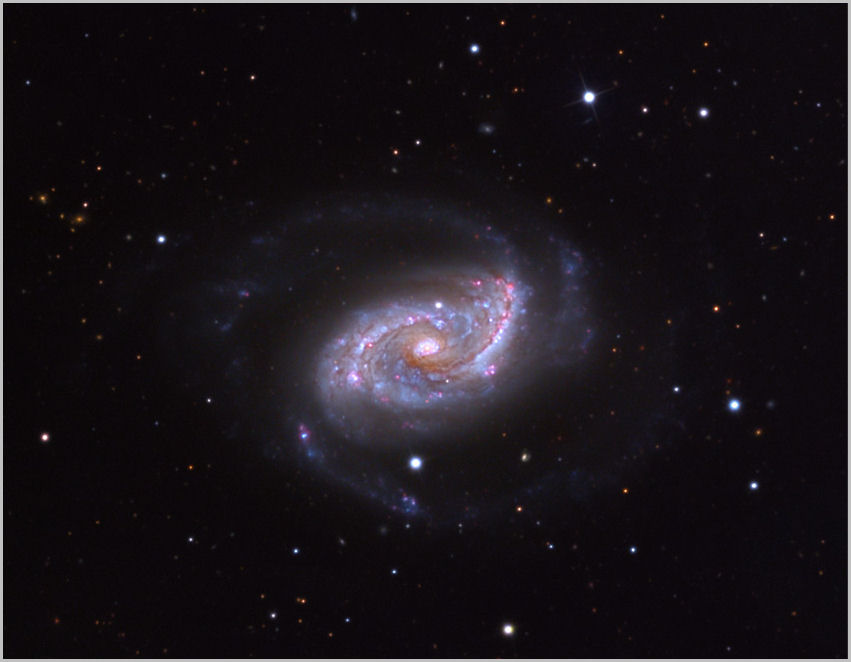
Moving out to a distance of 200 million light years, and well into the realm of large telescopes at magnitude 14.1, we find the large face-on spiral galaxy NGC 5754 colliding with the smaller, edge-on galaxy NGC 5752 below it.
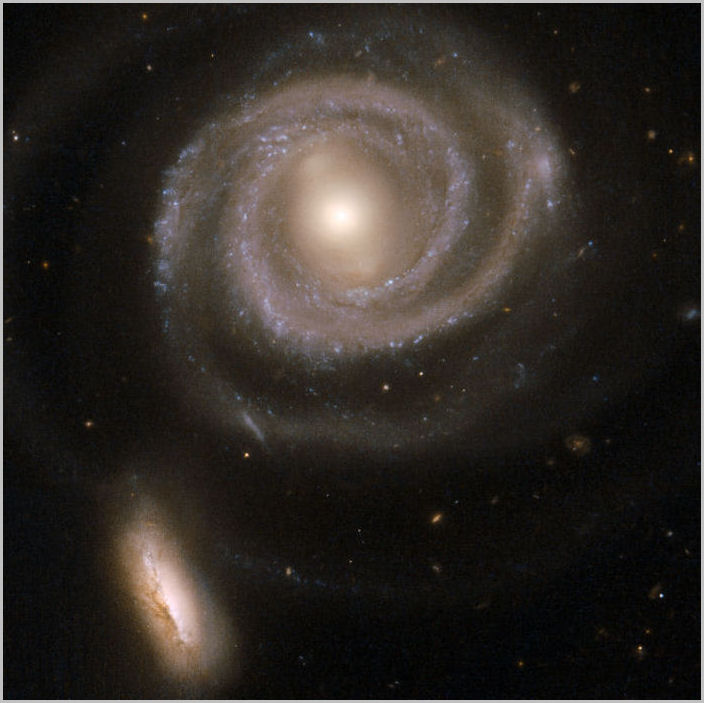
Jumping out even farther to the mind numbing distance of 450 million light years, are the colliding galaxies of VV 340 (Arp 302)
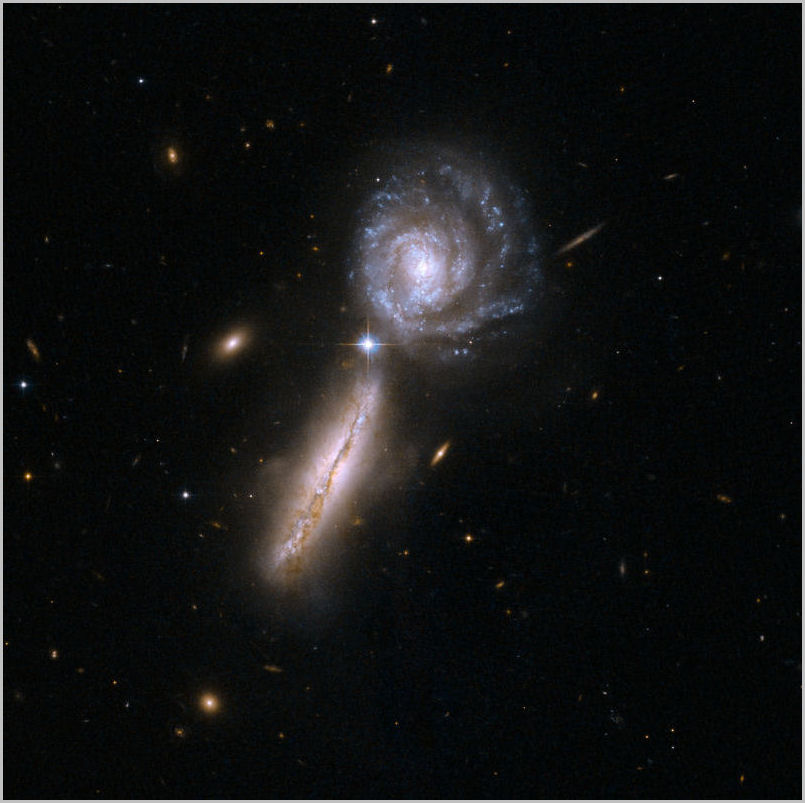
Way out at the astounding distance of 550 million light years, the merging galaxies of VV 705 (Markarian 848) form a striking image, dramatically demonstrating the violence of two colossal colliding galaxies tearing each other to pieces.
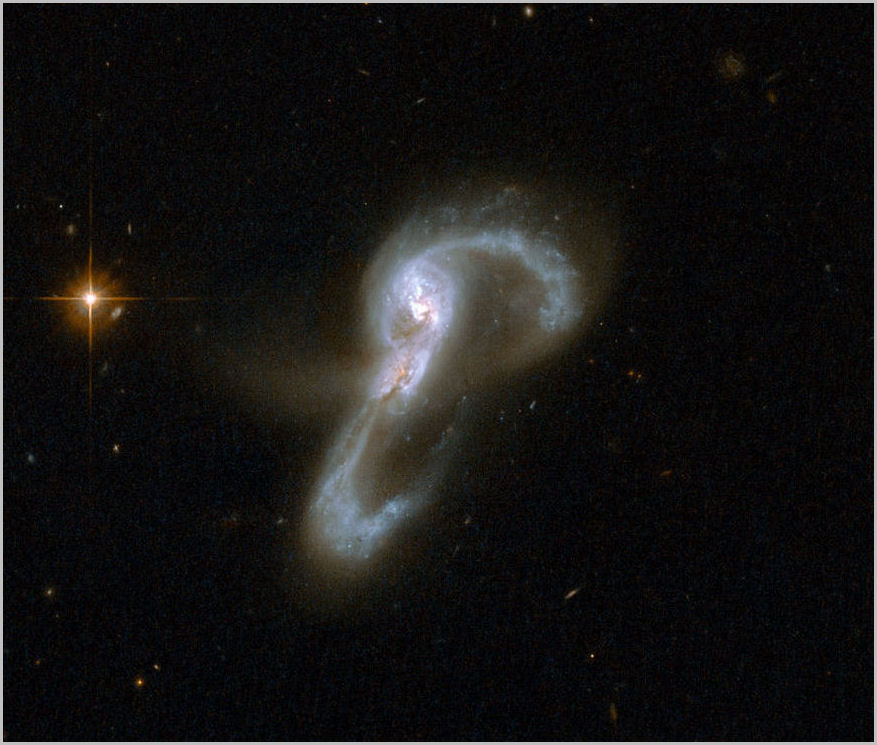
|
|
|
|
|
|